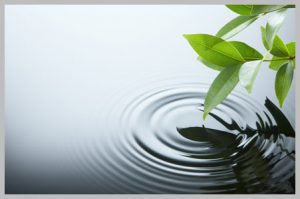上德不德,是以有德;下德不失德,是以無德。
上德無為而無以為;下德為之而有以為。
上仁為之而無以為;上義為之而有以為。
上禮為之而莫之應,則攘臂而扔之。
故失道而後德,失德而後仁,失仁而後義,失義而後禮。夫禮者,忠信之薄,而亂之首。
前識者,道之華,而愚之始。是以大丈夫處其厚,不居其薄;處其實,不居其華。故去彼取此。
The following text is translated by Stefan Stenudd.
The highest virtue is not virtuous(Te). Therefore it has virtue(Te).
The lowest virtue holds on to virtue(Te). Therefore it has no virtue(Te).
The highest virtue(Te) does nothing. Yet, nothing needs to be done.
The lowest virtue(Te) does everything. Yet, much remains to be done.
The highest benevolence acts without purpose.
The highest righteousness acts with purpose.
The highest ritual acts, but since no one cares,
It raises its arms and uses force.
Therefore, when the Way(Tao) is lost there is virtue(Te).
When virtue(Te) is lost there is benevolence.
When benevolence is lost there is righteousness.
When righteousness is lost there are rituals.
Rituals are the end of fidelity and honesty,
And the beginning of confusion.
Knowing the future is the flower of the Way(Tao),
And the beginning of folly.
Therefore,
The truly great ones rely on substance,
And not on surface,
Hold on to the fruit,
And not to the flower.
They reject the latter and receive the former.

The image is fromHospital Marketing Journal – Typepad
This chapter is rather long, and I would like to summarize the whole content as follow so we can understand better:
- Causes Effect
The highest virtue is not virtuous. So it has virtue.
Those who possess the higher form of virtue are not intentionally virtuous. Their actions are natural and unforced. This is why we say they have true virtue.
Those who possess the higher form of virtue do not act with contrivance. Their actions are without ulterior movies. They act out of virtue because it is natural, not because they want to “look good” doing it.
The lowest virtue holds on to virtue. So it has no virtue.
There are also those who possess a lower kind of virtue. They never lose sight of virtue because they have to constantly remind themselves to be virtuous. This is why we say they have no true virtue.
Those with the lower form of virtue are the opposite. When they act in ways that seem virtuous, they do so for a specific personal agenda – perhaps improving their image, assuaging guilty feelings, etc.
Lao-tzu’s definition of virtue, benevolence, righteousness, rituals, and their order, we list as follows:
The highest is the virtue: is no action, and no purpose of the act.
Next is benevolence: is with action, there is no purpose of the act.
Next is righteousness: is with action, and the purposeful act as well.
Next is the ritual acts: is with action, there is no response, so, lead to the response of confusion and disorder.
If people lose their virtues, then the next best thing would be benevolence. If people can still hold on to the mindset of love, compassion, and kindness, then they can at least treat one another in a way that is gentle and humane.
What if people lose their benevolence too? Then they will have no choice but to resort to righteousness. Their actions can no longer be guided by love, compassion and kindness. Instead, they will act, choose and decide based on correctness or a sense of justice. Everything becomes more muddled because right and wrong can often be so subjective.
Finally, what if people can no longer rely on righteousness? Then rituals is all that’s left. Following rituals, customs and propriety may or may not be right, benevolent, or virtuous… but at least there is something to follow.
This sort of rituals is artificial and disingenuous. Those who practice it are little more than thin shells without substance, pretending to be loyal and sincere while possessing neither quality. Such people are the source of chaos, discord and strife.
Similarly, people who possess knowledge without righteousness, benevolence or virtue are also thin shells lacking substance. Like flowers, they give a pleasing appearance but possess none of the satisfying goodness of fruits. That’s what we mean when we call them the flowers of the Tao. Such people may project a knowledgeable appearance, but are in fact ignorant in basic, fundamental ways.
To summarize, the truly great person would be the antithesis of the above. That is, they focus on substance instead of the thin veneer of superficiality. Their emphasis is on the real inner self, and not on the facade of external appearance. They discard the fakery of etiquette and knowledge, and reach for benevolence, justice, virtues… and finally the Tao.
Note:Tao Te Ching is comprised of two parts; the first one is from chapter one to thirty-seven. From chapter thirty-eight on, it discusses Te. Tao is the “body,” while “Te” is a phenomenon and an application. Only when we apply or use Tao, do we then gain the results. It is like two sides of a coin, and without either side then there is no existence of the Similarly.
In the past, people with insight thought they had mastered the beauty of “Tao.” However, without practicing Tao, it was the beginning of “ignorance.” To gain Tao, we should rely on the substance and get rid of superficial showiness.
References:
http://www.taoistic.com/taoteching-laotzu/taoteching-38.htm
https://terebess.hu/english/tao/DerekLin.html#Kap38
http://www.en84.com/dianji/zhuzi/201110/00007711.html



